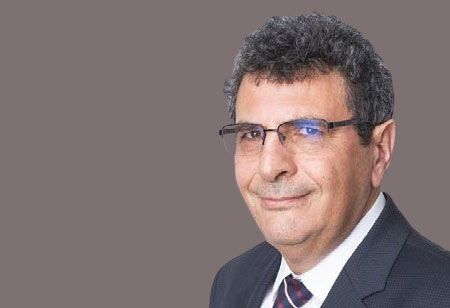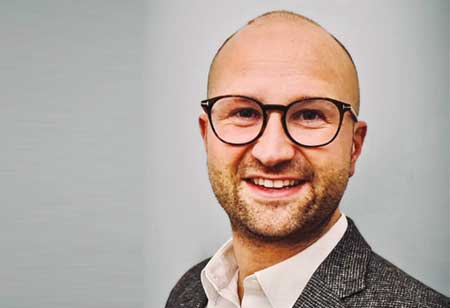THANK YOU FOR SUBSCRIBING

Making Innovation Accessible in Rehabilitation Technology and Practices
Louis Martinelli, Winchester Physio & Aquatic Service Lead, Hobbs Rehabilitation

 Louis Martinelli, Winchester Physio & Aquatic Service Lead, Hobbs Rehabilitation
Louis Martinelli, Winchester Physio & Aquatic Service Lead, Hobbs RehabilitationLouis Martinelli, Winchester Physio & Aquatic Service Lead at Hobbs Rehabilitation, began his career with a Bachelor’s degree in Sport & Exercise Science, followed by an MSc in Physiotherapy. His professional journey started in neurological rehabilitation, where he has over ten years of experience, complemented by 15 years in the exercise industry. Martinelli is skilled in using advanced rehabilitation technologies like the Ekso GT and ReWalk exoskeletons, which he has utilised daily for seven years at Hobbs Rehabilitation. During his tenure, he has engaged in multiple patient trials and assessments with various exoskeleton manufacturers. In collaboration with The University of Winchester, he contributed to a 2019 study published in the Journal of Spinal Cord Medicine, examining the effects of exoskeleton use on the vascular system.
Currently, Martinelli actively advocates for broader implementation of rehabilitation technologies, despite the high costs and limited availability, due to their significant benefits. His extensive experience in neurological rehabilitation and exercise science enables him to approach patient care with a comprehensive perspective on physical recovery and health improvement.
In an interview with Applied Technology Review Europe, Martinelli explains the importance of integrating affordable exoskeletons into clinical practice, emphasising accessibility and potential health benefits for a broader range of patients.
Industry Insights: Evolution and Future of Rehabilitation Technology
Significant advancements have been made in rehabilitation technology, particularly for treating conditions such as brain or spinal cord injuries, multiple sclerosis or Parkinson’s. At Hobbs Rehabilitation, the emphasis has been on the essential health benefits of standing and stepping, crucial for both practical and therapeutic reasons. Around ten years ago, in 2014, our team began integrating robotics into physiotherapy, a field traditionally known for its hands-on approach. After evaluating various models, we invested in an exoskeleton, which quickly became an integral component of our outpatient therapy, especially beneficial for patients with spinal cord injuries, strokes, and brain injuries.
“I consistently advise patients to ‘try before you buy’ to ensure the device fits within their living environment and to ascertain that proper training is available for effective usage”
Throughout the years, extensive data collection and research at Hobbs have highlighted the exoskeleton’s health benefits. Our studies indicate that even weekly sessions can significantly improve cardiovascular health in patients with spinal cord injuries. One particular study noted a ten percent increase in arterial elasticity after just one week of using the device. The exoskeleton enables patients to take up to 1,000 steps per session, a substantial increase from the typical twenty to thirty steps possible without such technology. This repetitive motion, similar to perfecting a golf swing, has led to better rehabilitation outcomes, especially for individuals with multiple sclerosis or incomplete spinal cord injuries.
The primary challenges remain the cost and limited availability of these devices. Initially, only two centers in the UK offered similar exoskeleton services, which limited many patients’ access to this transformative technology.
Currently, we are collaborating with a Spanish company, Able Human Motion, to develop a new exoskeleton model that entered the market this year. Together with the Austrian company Tech to People, we are leading a two-and-a-half-year funded research study in the UK, aiming to adapt this new exoskeleton for people with multiple sclerosis. This initiative marks a significant shift, as most exoskeletons have traditionally been designed primarily for spinal cord injuries. Over the years, various exoskeleton models, including the Ekso Indego and Rex Bionics, have been rigorously tested in the UK to find the best fit for individual patients’ needs.
Challenges in Using Exoskeletons with Patients: Limitations and Misconceptions
Using exoskeletons in patient care presents specific challenges, chiefly due to stringent screening criteria. Patients must adhere to certain physical prerequisites—they cannot weigh over 100 kilograms, must be between 5’2” and 6’4” in height, and should not have osteoporosis. Although these limitations ensure safety, they also restrict the pool of individuals who can benefit from these devices.
Cost and expertise required to operate exoskeletons pose additional challenges. While I regularly work with these devices, many clinicians do not have the necessary training or resources. Patients interested in purchasing an exoskeleton also face hurdles such as managing medical conditions that may include blood pressure issues, low exercise tolerance, or pain from injuries, which can complicate their ability to use these devices.
Finding the appropriate device adds another layer of difficulty. Patients often resort to online searches, which can be overwhelming and confusing. Moreover, local physiotherapists might lack the knowledge or experience with these technologies, making it challenging for patients to make well-informed decisions. Over the past decade, we have established robust relationships with various manufacturers, enhancing our ability to offer informed guidance. I consistently advise patients to ‘try before you buy’ to ensure the device fits within their living environment and to ascertain that proper training is available for effective usage.
Education plays a vital role, as advertising can sometimes create unrealistic expectations. It’s important for patients to understand that these devices are not typically used independently in everyday settings, contrary to what some promotional materials may suggest.
Future Innovations in Exercise Technology: Simplicity over Complexity
Advancements in exercise technology, particularly in braincomputer interfaces, have shown promising potential but come with significant challenges. A few years ago, a European project saw the development of a brain-computer interface, where an implant, placed on a man’s scalp or within his brain, recorded brain activity. This allowed him to control an exoskeleton by merely thinking about moving his limbs. Although the technology was groundbreaking, the prohibitive costs associated with such innovations make them inaccessible for widespread use.
While the allure of cutting-edge technology is undeniable, the true breakthrough will come from creating simpler, more cost-effective solutions that cater to a broader audience. The focus should not be on luxury but on practicality and efficiency for all. In the UK, for instance, exoskeletons can cost as much as £100,000, severely limiting who can benefit from them. A simpler, more affordable exoskeleton, priced around £20,000, would be far more transformative, significantly enhancing accessibility and impact.
Advice for Industry Peers: Embrace Innovation and Evidence-Based Practice
At Hobbs Rehabilitation, we emphasise the importance of hands-on experience with emerging technologies. When new devices are introduced by companies, it’s beneficial to keep an open mind and seize the opportunity to test them. Often, these companies offer a free trial period—sometimes extending up to a month. This allows you to evaluate how these technologies might enhance your practice directly.
While gathering tangible evidence of their efficacy can be a challenge, it is crucial. Clinicians who work with exoskeletons are encouraged to collect data and share their findings. In the UK, for instance, presenting a research paper or engaging in poster presentations at conferences can effectively disseminate knowledge. It’s vital to change the perception that exoskeletons are exclusive to private practices or affluent demographics. With strategic budgeting, these innovations could potentially become accessible to a broader range of patients in the future.
Read Also























ON THE DECK